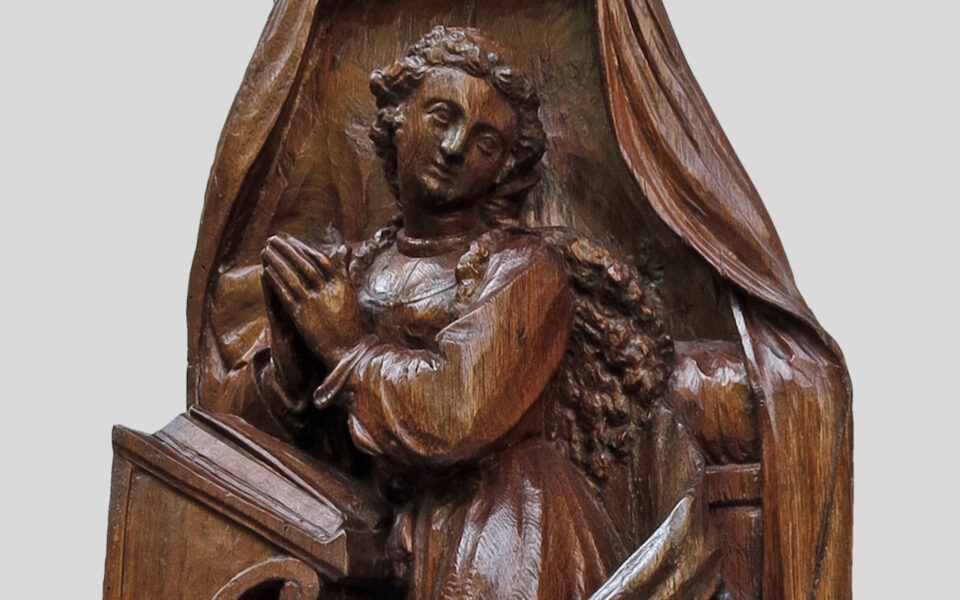
A Graceful Virgin of the Annunciation
The present sculpture depicts the Virgin Mary while receiving the words of Archangel Gabriel, with her hands in prayer and kneeling in front of an elegant pulpit with molded profiles. While reading the sacred text, she turns her gaze downwards with an elegant bowing of her head in sign of subdued acceptance of the miracle. The figure stands out against a canopy surrounding the bed.
A remarkable feature of this piece is the mild and elegant woman’s face, showing particularly fine traits and framed by thick, curly hair.
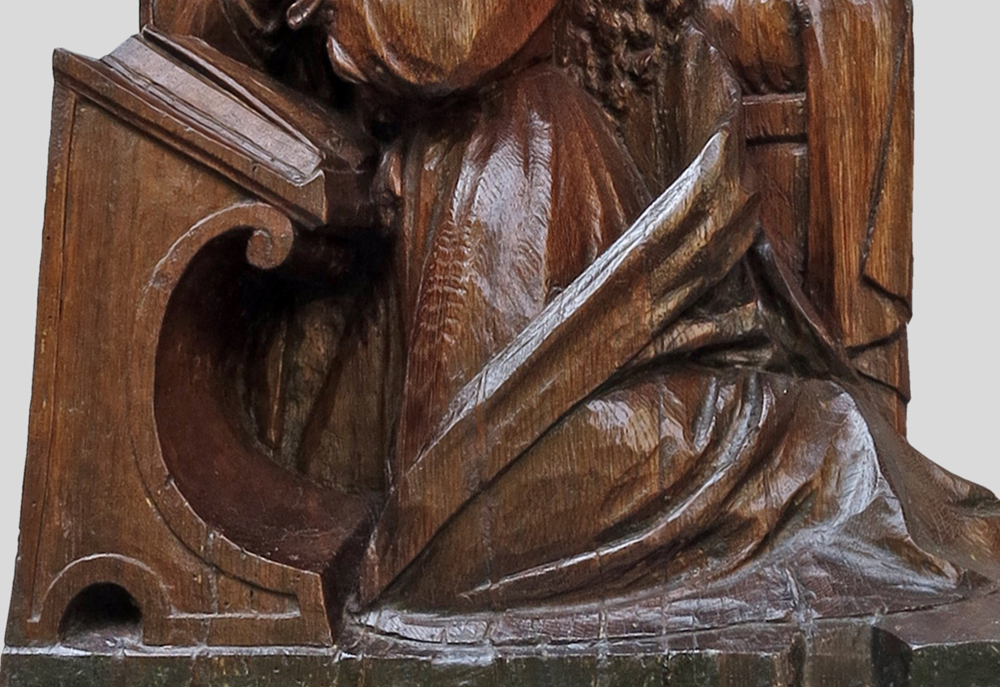
The kind of wood and the size of the sculpture confirm doubtless that this high relief originally belonged to a carved altarpiece, dedicated to the Stories of the Virgin: this kind of reliefs, typical of the northern European culture, represent in very limited spaces a number of biblical episodes with a lively narrative spirit.
Next to the Virgin, on the right side, there must have been a similar sculpture depicting the Announcing Archangel.
Here, the monumental treatment of the drapery and the detail of the Virgin’s hair, loose and long, falling on her chest in two curly locks, are typical elements of a fully Renaissance artistic language, as confirmed by the shape of the lectern and the gown: both can be found, very similarly, in paintings and engravings of Flemish Mannerism.
In fact, this sculpture was certainly made in the Flemish area, perhaps in the southern part of Flanders, which was influenced from the Mediterranean culture, as demonstrated by the large but clear volumes and the natural pose of the Virgin. Further confirmation is provided by Mary’s calm expression, free from that emphasis on details, typical of Flemish art, sometimes exaggerated to the point of caricature. Moreover, the classical style, of Roman inspiration, of the canopy – acting as a cloth of honor – can be found in many images around the second half of the 16th century, supporting the proposed chronology.
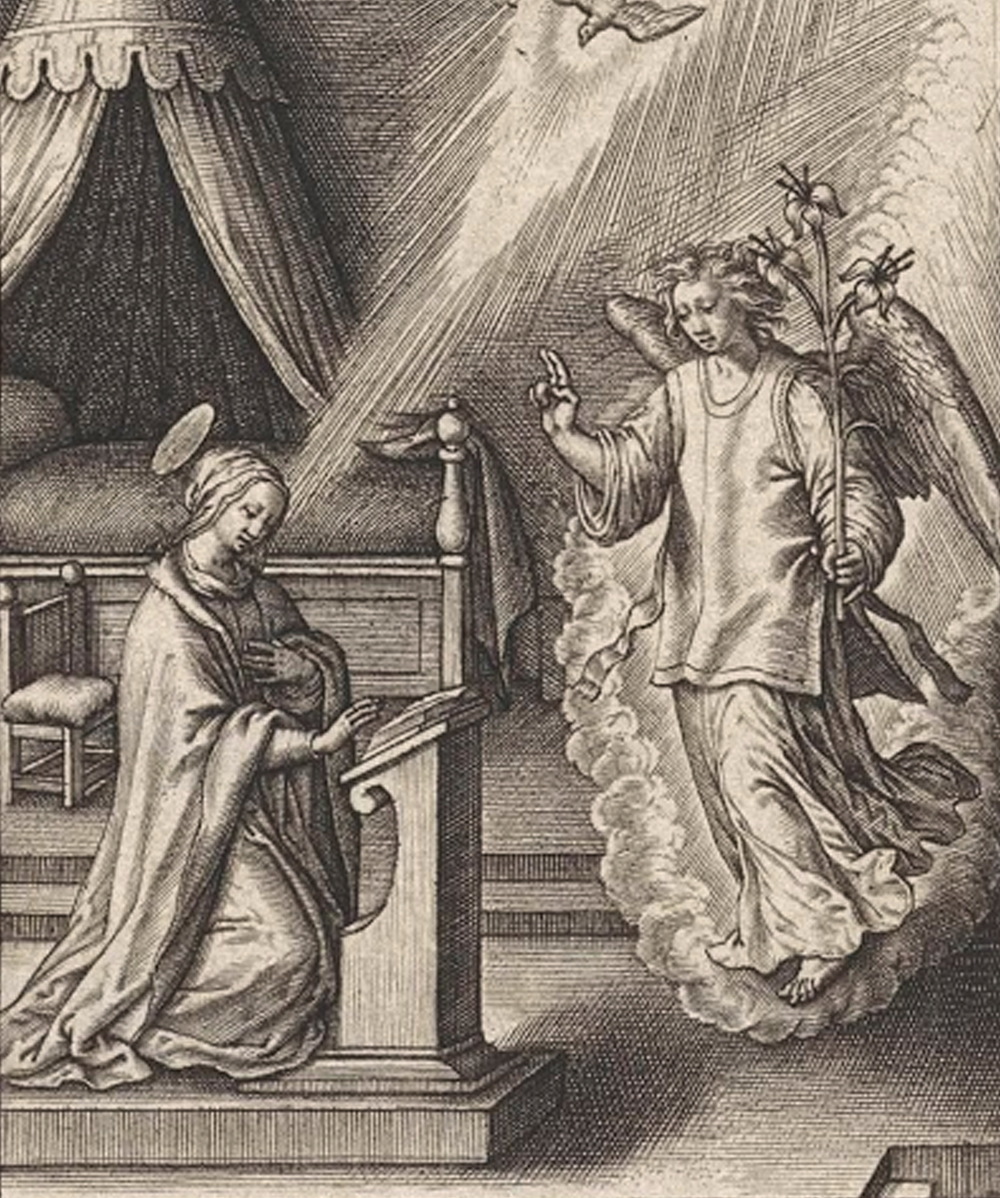
The Annunciation theme, widespread in the Christian world, describes the moment when the Archangel Gabriel foretells the birth of the Christ Child.
The iconography of the Virgin kneeling, reading and praying, surprised in a domestic setting by the arrival of the Archangel Gabriel, has been attested throughout Europe since the Middle Ages.
The version in which the Archangel arrives behind Mary’s back, and her subsequent sudden turning, shows a narrative device further emphasizing the Archangel’s immaterial essence and the young woman’s complete innocence and devotion.
The iconographic fortune of the Virgin Annunciate in northern Europe is also well attested by the renowned and widespread alabaster reliefs produced in Malines during the 16th century, such as those belonging to many public and private Flemish collections, contemporary to the sculpture examined here.
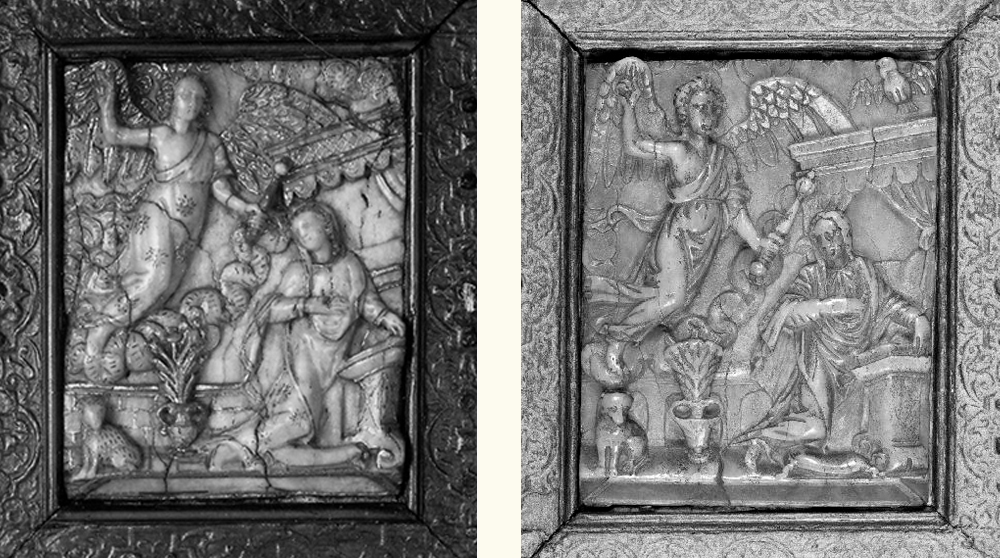
However, in the northern European sculpture panorama, and more specifically, among the typical subjects of wooden altarpieces of this period, the iconography of the Virgin Annunciate is quite unusual.
Among the rare sculptures depicting this particular subject, we can mention the earlier version by Adriaen van Wesel (Utrecht, 1417- after 1490) from the Gruuthusemuseum in Bruges, dating to the late 15th century.
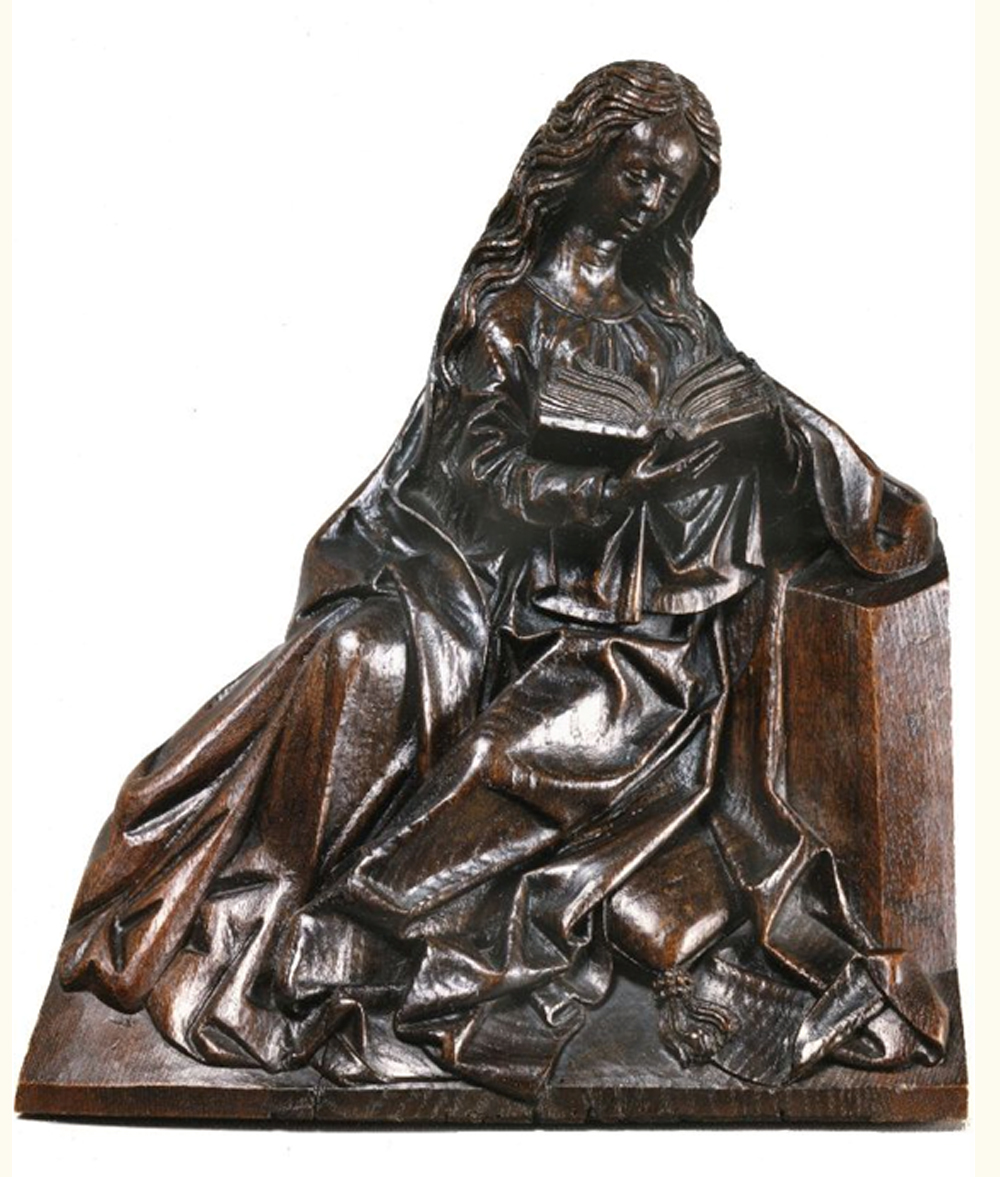
In any case, the iconography of the Virgin of the Annunciation certainly owes its success also to the diffusion of prints, such as the one illustrated just above, which is particularly eloquent in the details of the circular canopy.
Upon careful observation, our Virgin still shows some small traces of an ancient polychromy: the skin color on the hands, some blue on the robe and some red on the dress as well as some gold on the robe, on the pulpit and on the book edges.
Compared to the rare examples known through the most important photographic repertories, our sculpture certainly stands out for the quality of the carving, its carefully balanced proportions and its significantly good conservative conditions, given the integrity of the most fragile details.
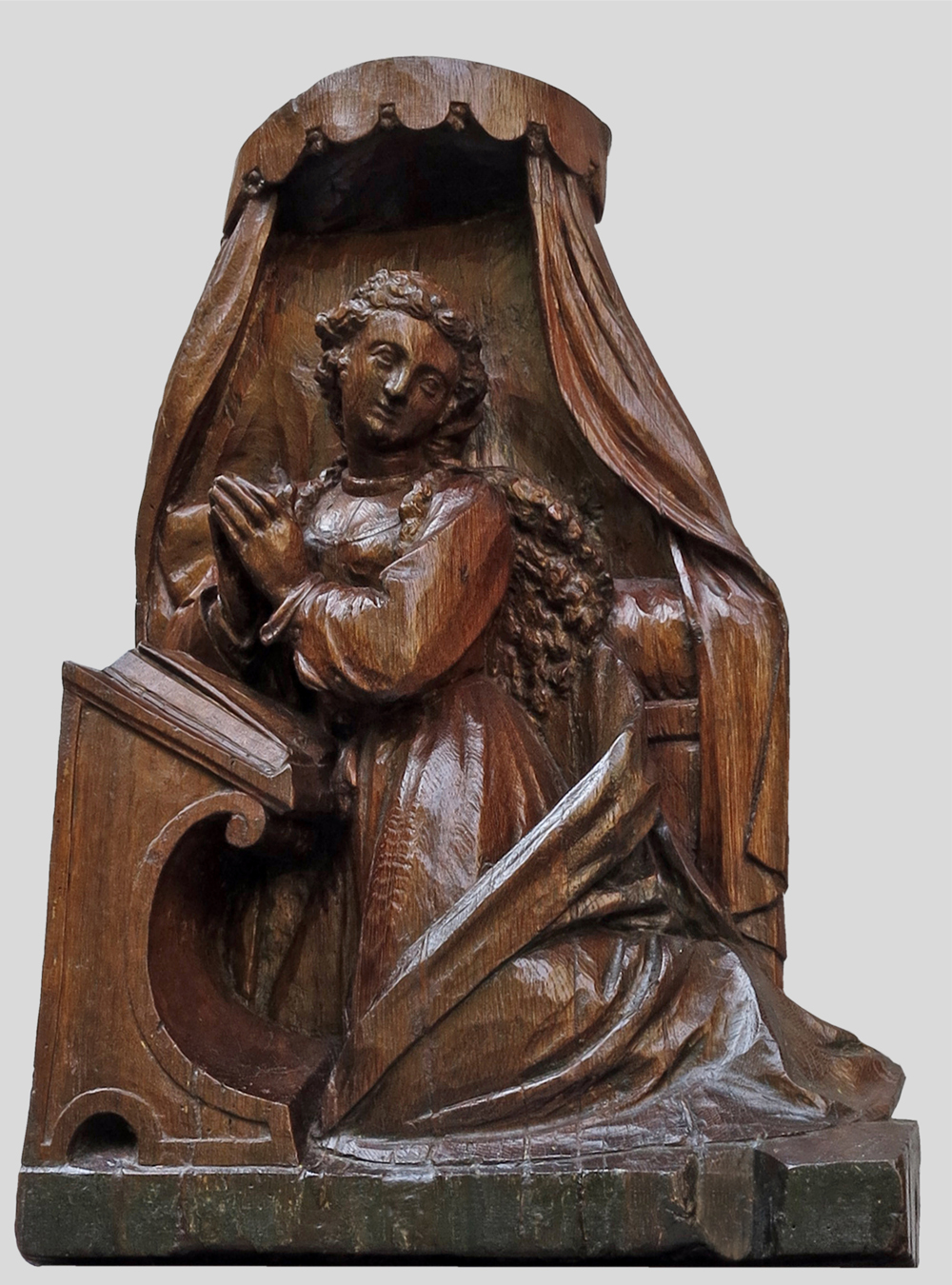
VIRGIN OF THE ANNUNCIATION
Southern Flanders
16th century, second half
Oakwood
Cm 30 x 7,5 x 47h
© 2013 – 2024 cesatiecesati.com | Please do not reproduce without our expressed written consent
Alessandro Cesati, Via San Giovanni sul Muro, 3 – 20121 Milano – P.IVA: IT06833070151